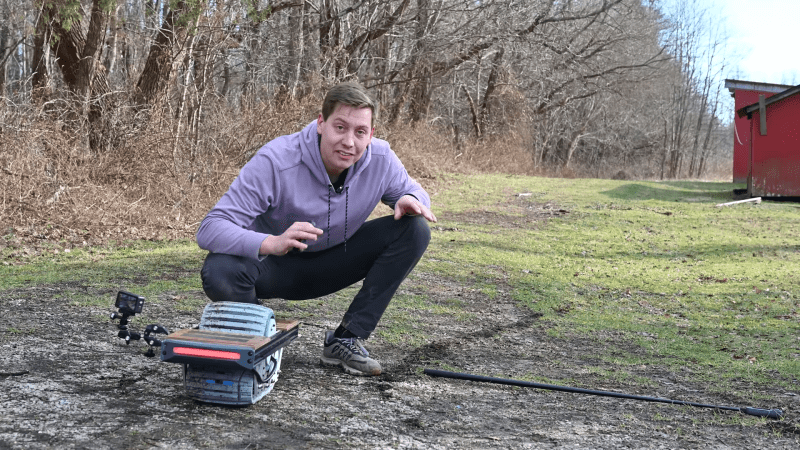One-wheels use motion-tracking hardware and fine motor control to let you balance on a single wheel. That’s neat and all, but [Michael Rechtin] had another idea in mind—what if a one-wheel used a track instead?
The idea behind the track was to make the one-wheel more capable on surfaces where wheels simply can’t compete. The tracked drivetrain was largely 3D printed, including some massive gears that are supplemented by a big old 150 mm ball bearing which sits around the drive motor itself. If you love planetary gear trains with a 4:1 reduction, this project is for you. Carbon-fiber reinforced filament was used for many of the parts to give them some additional strength. Control is a little different than a traditional one-wheel, since the flat-bottomed track means lean controls won’t work. Instead, a wireless hand throttle was constructed to enable the rider to command the direction of travel.
It’s not easy to ride, but the one-track does actually work. It’s capable of crawling its way around on grass and snow quite well. There were some issues with the printed tracks and rollers, particularly when turning, but tweaks to round out the track profile helped solve that issue to a degree. There’s a reason we often use wheels instead of tracks, but somehow tracks are still just cool.
















its not a 1 wheel anymore is it?
I wonder how it would work in really deep snow… Kind of like a very small, light snowmobile. Would the track be wide enough for a snowshoe effect? You’d have to figure out a procedure for getting back up on it if (when) you fall off.
It is all wrong, that track cannot climb anything, compared to a tank it is upside down. Strongly suspect he knows that quite well… but youtuber…
He made a video about Active Aero a few years back, bit of a parody, I miss that guy.
It seems pretty clear that the flat track on the underside is what makes it almost impossible to steer, as the original Onewheel relies on the dome-like “crowned in both directions” shape of the big wheel to allow steering, to pivot around the contact patch on the ground.
The flat, rectangular contact patch of the track just sticks to the ground too well and prevents turning.
The track on the bottom would most likely need a high point (giving it a shallow v-shape), to go with the curved track, to create a a smaller contact patch that would allow turning.
It has rounded cylinders and flexible track band, so the steering seems to be pretty possible.
Don’t tanks and Caterpillars steer by varying speed of one track versus the other ? Or even stopping one track and powering the other ? That is why I think that making any turns on this thing won’t work with the flat wide track he has.